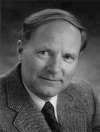Pharmaceutical industry analysts estimate that the market for anticoagulants will double to about $10 billion by 2021. The growth will be driven by three main factors.
- The increasing number of people diagnosed with atrial fibrillation. Primary care physicians are now being encouraged to check the pulse of their patients every time they visit.
- Tightening of the indications for prescribing anticoagulation. At present, both European and US guidelines recommend no anticoagulation if no risk factors are present (CHADS2 score of 0).
For a score of 1, aspirin or warfarin therapy is recommended. In view of the fact that aspirin has consistently been proven worthless in preventing stroke in AF patients, the choice for a risk score of 1 is realistically,
no antithrombotic therapy or warfarin. This, however, will no doubt change. A new risk score, CHA2DS2-VASc, has been proposed and is rapidly gaining ground.
According to this score, 1 point each is added to the CHADS2 score for age over 60 years and female gender. Thus, it is likely that future guidelines will recommend anticoagulation
for all female afibbers regardless of age and for male afibbers above the age of 60 years. Currently the age at which one point is added is 75 years.
- The need to aggressively market the new anticoagulants (dabigatran, rivaroxaban, apixaban) which have cost millions of dollars to develop and test.
A key ingredient in this marketing effort will obviously be to convince cardiologists and primary care physicians to prescribe these drugs to a much wider group of patients than is currently the case.
In this issue we review the results of clinical trials of the three main contenders to warfarin. Although they each have certain advantages and disadvantages,
the winner would appear to be apixaban (Eliquis) developed by Pfizer and Bristol-Myers Squibb. Nevertheless, for afibbers with only one risk factor for ischemic stroke,
a natural approach to stroke prevention will likely be the safest and least expensive option. A review of alternative stroke prevention choices can be found at
www.afibbers.org/resources/stroke_prevention.pdf.
Also in this issue we report that the CHADS2 score used in the prediction of stroke risk is also useful in predicting the outcome of catheter ablation,
that vitamins C and E play a role in preventing post-operative AF, that the mini-maze procedure has a good chance of curing afib with a single procedure, and that NSAIDs have been implicated in the development of AF.
And finally, if you need to restock your supplements, please remember that by ordering through my on-line vitamin store you will be helping to defray the cost of maintaining the web site and bulletin board.
You can find the store at www.afibbers.org/vitamins.htm - your continuing support is truly appreciated.
Wishing you lots of NSR,
Hans

|


















